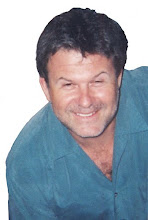Buck Owens justifiably gets most of the credit for defining and popularizing the Bakersfield Sound, that rollicking cousin of rockabilly, but Billy Mize — whose 80th birthday party will be held April 28 at the Crystal Palace — was on the local music scene years before Owens.
In fact Mize, along with Bill Woods, deserves much of the credit for helping the music of the late-’30s Dust Bowl migration translate into Bakersfield honky-tonk, an important forerunner of today’s rock and country, and a spiritual predecessor of the alt-country, No Depression sound coming out of places like Austin, Atlanta and Seattle.
I’d never read precisely how the music of the federal labor camps evolved into Bakersfield honky-tonk, so a few years ago I did some research and found Mize (who went on to become a big TV star in the ‘50s and early ‘60s) right there at the beginning. An excerpt:
Most weekend days during the early post-war years, younger residents of the Sunset labor camp, as the Arvin labor camp was also known, would walk a mile east to mingle with migrant workers from the squatters’ camps around the town of Weedpatch, which was not much more than a single rural intersection in the middle of acres of table-grape vineyards. They would meet, hundreds of them, at a business called the Collins Auction.
“This is how it began,” honky tonk drummer Jimmy Phillips told me. “You have all these people that’s migrated here from Oklahoma and they’re squatted there (in tents on private land all around Weedpatch) … A lot of them people would go up and they’d listen to Billy Mize and Bill Woods … come out and play. Man, I’m tellin’ you, it would be like a dream for me and many of the others, just to go up and listen to ‘em. And you would think, man, one of these days, this is gonna work, we’re gonna get to get in and do this (ourselves).”
Mize’s story is an important chapter in a story that touches on Texas-style Western Swing, federal labor camps, and the West Coast shipyards and aircraft factories of World War II. Those were some of the ingredients that came together to create the Bakersfield Sound. Here, in all its 8,800-word glory, is the entire story.
Subscribe to:
Post Comments (Atom)


No comments:
Post a Comment